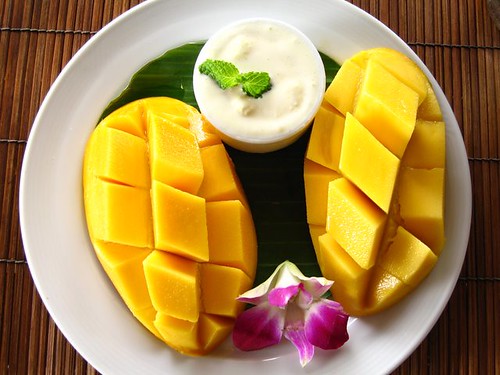
Krabi is a southern province on Thailand's Andaman seaboard with perhaps the country's oldest history of continued settlement. After dating stone tools, ancient colored pictures, heads, pottery and skeletal remains found in the province's many cliffs a caves, it is thought that Krabi has been home to homo sapiens since the period 25,000-35,000 B.C. In recorded times it was called the 'Ban Thai Samor', and was one of twelve towns that used, before people were widely literate, the monkey for their standard. At that time, c.1200 A.D.,Krabi was tributary to the Kingdom of Ligor, a city on the Kra Peninsula's east coast better known today as Nakorn Sri Thammarat. At the start of the Rattanakosin period, about 200 years ago,when the capital was finally settled at Bangkok, an elephant kraal was established in Krabi by order of Jao Praya Nakorn(Noy),the Rajah of Nakorn Sri Thammarat,which was by then a part of the Thai Kingdom.He sent his vizier, the Pra Palad to oversee this task,which was to ensure a regular supply of elephants for the larger town, So many emigrated in the steps of the PRA Palad that soon Krabi had a large4 community in three different boroughs:Pakasai, Klong Pon,and Pak Lao. In 1872,King Chulalongkorn graciously elevated these to town status, called Krabi, a ward that preserves in its meaning the monkey symbolism of the old standard. The town's first governor was Luang Tehp Sena, though it continued a while as a dependency of Nakorn Sri Thammarat, This was changed in 1875, when Krabi was raised to a fourth level town in the old system of Thai government in Bangkok, and Krabi's history as a unique entity, separate from the other provinces, had begun.
During the present reign, the corps of civil servants, the merchants, and the population generally of Krabi and nearby provinces have together organized construction of a royal residence at Laem Hahng Nak Cape for presentation to Her Majesty the Queen. This lies thirty kilometers to the west of Krabi Town on the Andaman coast.
Present Day Government
Krabi is divided into eight districts: Muang(Krabi Town),Kao Panom, Klong Tom,Plai Praya,Koh Lanta,Ao Luk,Lam Tap,and Neua Klong.
Size, Location, and Boundaries
Krabi is on the Andaman Sea coast west Thailand,between 7'30" and 8'30" north latitude, and 98'30" and 99'30" west longitude, Total area is 4,709 square kilometers bounded thus:
On the North: Lie Phang-nga and Suratthani Provinces .
On the South: Lie Trang Province and the Andaman Sea
On the East : Lie Trang and Nikon Sri Thammarat Provinces
On the West: Lie Phang-nga Province and the Andaman Sea
Population
Krabi's estimated population,as of 30 July 1998,was 368,249.
Geography
Krabi's mountainous physical geography is broken by highlands and plains on the mainland; the provincial administration also covers more than 130 islands big and small in the Andaman. Natural forest cover is chiefly mangrove and Cassia trees. Krabi's sandy clay soil conditions are perfect for a variety of agricultural products, including; Rubber trees, palms,oranges, coconuts, and coffee The Krabi River flows 5 Kilometers through the city and falls into the Andaman at Tambon Pak Nam. There are other streams as well: The Klong Pakasai; the Klong Krabi Yai; and the Klong Krabi Noy; these have their source in the province' shighest range of mountains, the Kao Panom Benja.
Climate
Weather in Krabi is typically that of the tropical monsoon, providing the province with just tow seasons, the hot season from November to April, and the rainy season from May to October. Moms winds, which change according to season, blow from the southeast, the southwest, and the northeast. Temperatures for the year range between 16.9 and 37.3 degrees Celsius; yearly rainfall averages 2,568.5 Millimeters.










